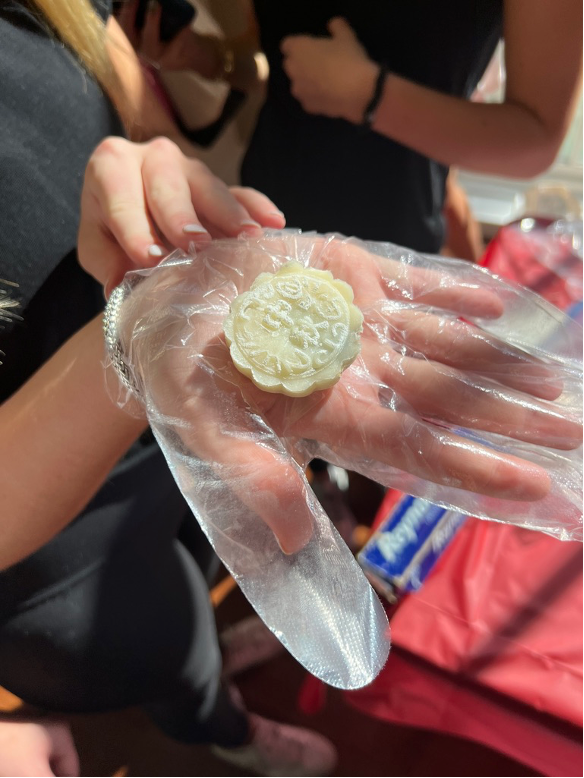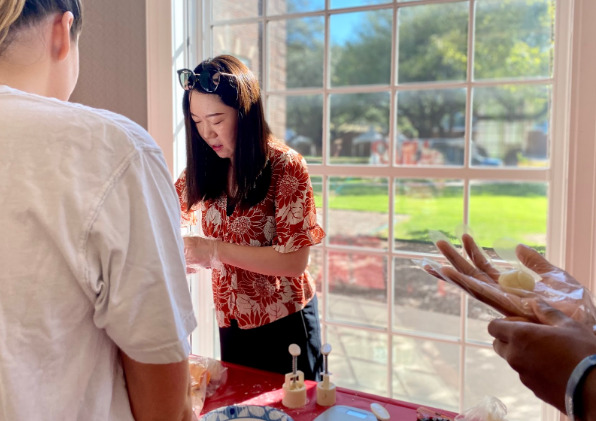Wei Qu swiftly wraps mochi dough around a thick taro paste and gently presses a small mooncake mold into the dough. Sweet and savory scents surround the table at Southern Methodist University where she diligently works.
Students assembled at Perkins Prothro Great Hall to experience the Chinese Language Club’s Mid-Autumn Festival event. Booths in the room offer students Boba tea, lantern making, and Mahjong. Murmurs buzz throughout the room as friends gather to learn how to make a mooncake, one of the activities offered during the club’s event. Qu, a senior lecturer of Chinese at Southern Methodist University, smiles as she discusses the origins of the delicate pastry.
“It is a reflection of the moon,” she says. “People eat the cake during the Mid-Autumn Festival, and on that day the moon is the roundest for the whole year.”
Qu wraps her fingers around a large roller and thins out the remaining pieces of dough on the table to create cakes for the hungry students. Once complete, she leaves the students with a tiny, memorable treat.

Meanwhile, the atmosphere is intense as students play games. A large crowd gathers around students setting up for Mahjong. Then, their attention shifts to another contest: the chopstick game. Contestants speedily place peanuts in a bowl with their chopsticks, and the bowl with the most peanuts wins. Stakes are high since the winner gets another Boba tea.
Creating mooncakes is one of the many traditions that take place during the Mid-Autumn Festival in Asian countries. The festival is one of China’s most significant and popular holidays. This festival is a celebration of the harvest season and a time when families and friends congregate.
The holiday was celebrated on September 10th this year. The festival lasts for three days and takes place during a full moon.
There are different Mid-Autumn Festivals for every culture, and their club is learning more about Chinese culture, says Minseo Kim, a junior at SMU and treasurer of the Chinese Language Club.
“So far what I know from the Chinese version of the Mid-Autumn Festival is they also have mooncakes and it is just a big celebration in general of the Mid-Autumn season, which is a harvesting season,” she says.
Friendly activities bring together students from different backgrounds, a long-anticipated scene for the Chinese Language Club. Last semester the club held smaller events, mostly study sessions. Plans look different this semester as the club educates its larger group of attendees.
As their organization grows, the Chinese Language Club plans on holding more larger events like the Mid-Autumn Festival. This way, students will have a chance to learn more about their organization and China’s culture.










